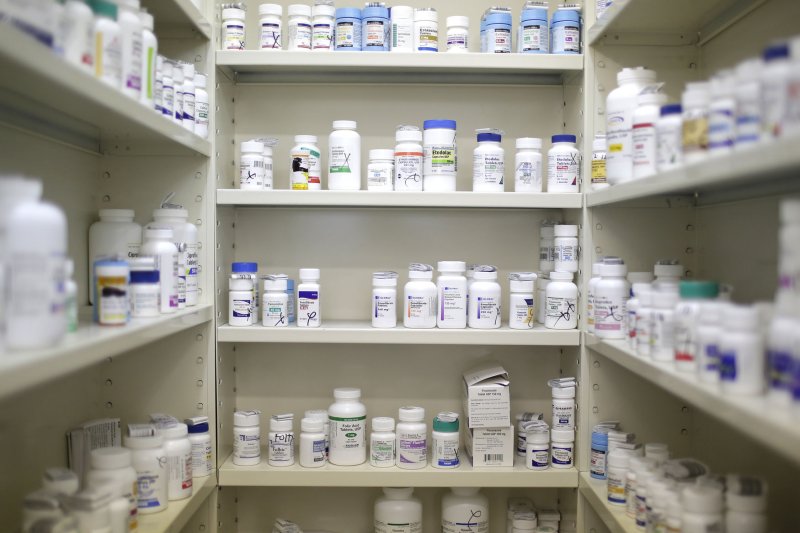Researchers at the University of Michigan say surgeons and physicians need to better coordinate prescriptions for pain-relieving opioid drugs after surgery in order to prevent patients from misuse of the drugs or developing an addiction. File photo by John Angelillo/UPI |
License Photo
June 12 (UPI) -- Surgeons and physicians need to better coordinate prescriptions for pain-relieving opioid drugs after surgery to prevent patients from becoming addicts, according to a new review of medical records.
Researchres at the University of Michigan conducted an analysis of medical records to find the areas of medicine most likely to prescribe opioids following surgery, and how long the prescriptions are filled for after surgical procedures. The findings were published Monday in the Journal of General Internal Medicine.
According to 2017 research by the Centers for Disease Control and Prevention, a one-day opioid prescription carries a 6 percent risk of use one year later and a 2.9 percent risk three years later.
Of people given prescriptions for eight or more days, 13.5 percent continue to use them a year later. For a month-long prescription, that rate climbs to 30 percent -- after 12 weeks of therapy, however, the rate of long-term use levels off.
"Millions of Americans each year are continuing opioid use beyond the normal recovery period of 90 days after a surgical procedure," Dr. Michael Klueh, a professor in Michigan's Department of Surgery, said in a press release.
The Michigan researchers analyzed insurance claims nationwide filed by patients between 18 and 64 years old who had undergone surgical procedures between 2008 and 2014 and received opioid medications for the first time.
They identified 5,276 patients who had developed persistent drug habits and continued filling opioid prescriptions three to six months after their operations had taken place. Klueh's team noted which medical practitioners had provided them the prescriptions.
The breakdown was 69 percent by surgeons, 13 percent by primary care physicians, 2 percent by emergency medicine personnel, and 1 percent by physical medicine and rehabilitation staff. All other specialties combined for 15 percent of such prescriptions.
Nine to 12 months after surgery, 53 percent of opioid prescriptions were provided by primary care physicians followed by surgeons at 11 percent, emergency medicine at 5 percent, physical medicine and rehabilitation staff at 6 percent and all other specialties a combined 25 percent.
"Heightened awareness among patients, surgeons, and primary care physicians that surgery increases the risk of new persistent opioid use is necessary to promote improved communication and aggressive tapering of opioids while still in the acute surgical period," Klueh said.
He believes patients need information about the realities of postoperative pain, and how long they can safely use opioids after surgery. In addition, he said doctors should consider prescribing non-opioid painkillers after surgery.
"Shorter initial opioid prescriptions after surgery would trigger a feedback loop between patient and physician, allowing surgeons to rapidly identify patients that continue to require opioids," Klueh said.















